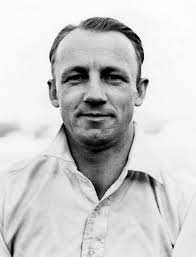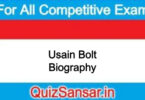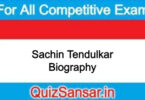Sir Donald Bradman Biography

BIRTH: August 27, 1908, Cootamundra, Australia
DEATH: February 25, 2001 (aged 92), Kensington Park, Australia
Sir Donald Bradman Biography : Life, stats, records
Sir Donald Bradman was an Australian cricketer, commonly referred to as “The Don”. He had a Test batting average of 99.94. This has been registered as the greatest achievement by a sportsman in any major sport. In 1997, John Howard, Prime Minister of Australia, called him “the greatest living Australian”.
Bradman was born to George and Emily Bradman on August 27, 1908 in New South Wales, Australia. Bradman played cricket from a very early age. He used to play solo cricket with a cricket stump and a golf ball. Bradman scored his first century when he was merely twelve years old while playing for his high school.
Bradman had his debut when he was nineteen years old at the Adelaide Oval. He scored 118 runs for the NSW (The New South Wales Cricket team). In 1928, the cricketer played his first Test match against England. His debut performance was not noteworthy, but he scored 79 and 112 runs in the third Test at the MCG. Bradman became the youngest player at the time to score a Test century.
In 1930, he was chosen to play in the Ashes series against England. He scored 131 and 254 runs in the first and the second Test respectively. In the third Test he recorded a triple century, and scored a double century in the fourth and final match, thus, contributing to Australia’s win in the Ashes.
The 1932-33 Ashes series was held in Australia. The English player, Douglas Jardine, came up with the ‘Bodyline’ tactic to combat the batting skills of Bradman. This bowling tactic was seen to be physically threatening for a batsman. This affected Bradman’s performance in the match. His batting average of the series was 56. England won the series.
In the 1938 tour of England, the cricketer performed exceedingly well. Bradman played in 26 innings and scored 13 centuries for his team. During the Second World War, in 1940, the cricketer joined the Royal Australian Air Force on aircrew duty. However, he soon got transferred to the army as a Lieutenant. Bradman was posted at the Army School of Physical Training. His health was severely affected in the term due to the stresses of the job. In 1941, he was discharged from service.
In the mid-1940s, Bradman returned to cricket. He played his final Test at The Oval in 1948 against England. The cricketer ended his career with a Test Batting average of 99.94. Bradman is the only Test player to have scored 300 runs in a single day’s match.
Donald Bradman scored 6996 runs in 52 Test Matches throughout his career. He has scored a total of 29 test centuries. He has a record of 974 runs in a series, the most scored by any player in Test history till date. In 1949, he was knighted for his services as a cricketer. Bradman is the only Australian cricketer to have acquired such an honor. In 1979, the Australian Government honored him with the title of a Companion of the Order of Australia. He was voted as the ‘Greatest Cricketer of the Twentieth Century’ by the Wisden Cricket Almanack in 2000.
Bradman married Jessie Martha Menzies in 1932, after a twelve-year-long courtship. Their first child died as an infant. They later had a son and a daughter, both suffering from severe health issues. Lady Bradman passed away in 1997 due to cancer. She was 88 years old. Sir Donald Bradman died at the age of 92 on February 25, 2001.
The cricketer wrote a few books in his lifetime. His first book was published in 1930 called Don Bradman’s Book – The Story of My Cricketing Life with Hints on Batting, Bowling and Fielding. Other books by Bradman include, My Cricketing Life, Farewell to Cricket and The Art of Cricket.
The Royal Australian Mint issued a com memorative gold coin with the image of the cricketer on August 27, 2008. In the following year, Bradman got inducted to the ICC Cricket Hall of Fame.
- What is meant by Database Management System?
- Discuss the advantages and drawbacks of database.
- What do you mean by database ? Discuss its Characteristics.
- What is Data Mining?
- What are the conditions of communication?
- What do you mean by business communication ?
- organization / Differentiate between classical and modern theory of organization
- What is forecasting






